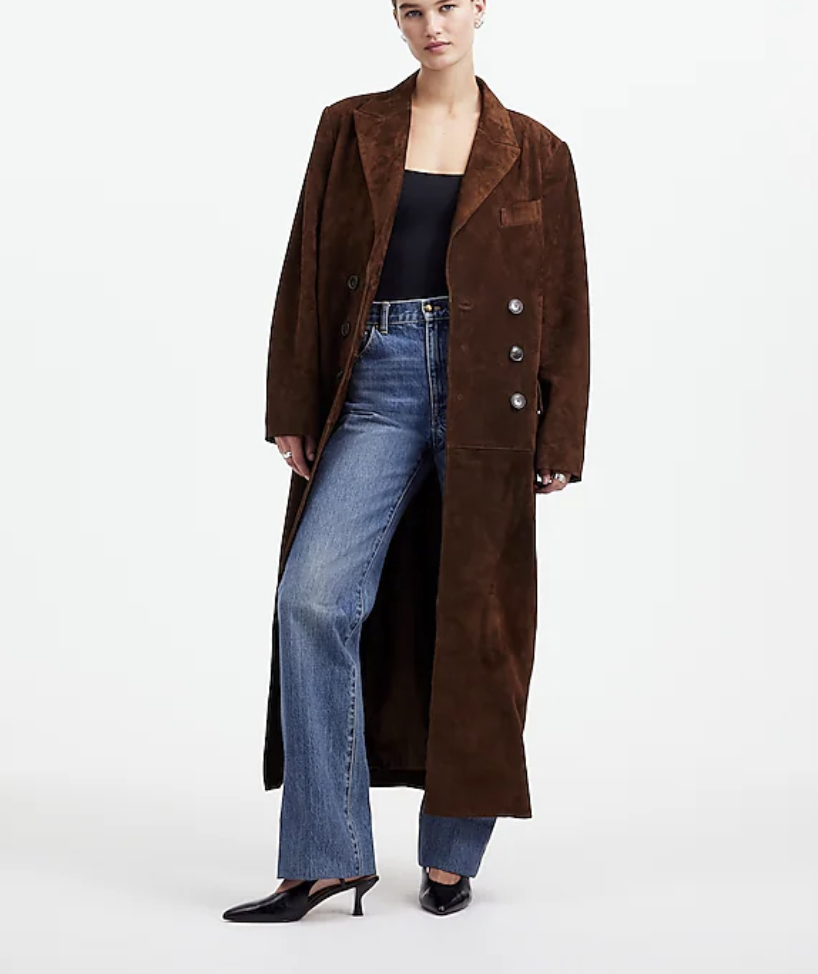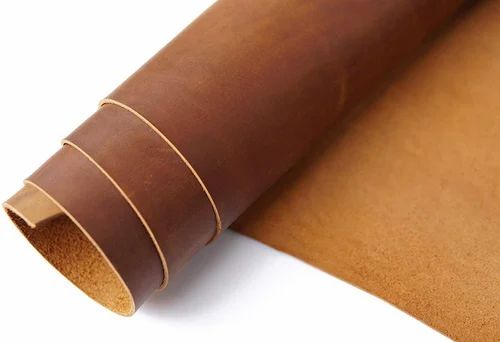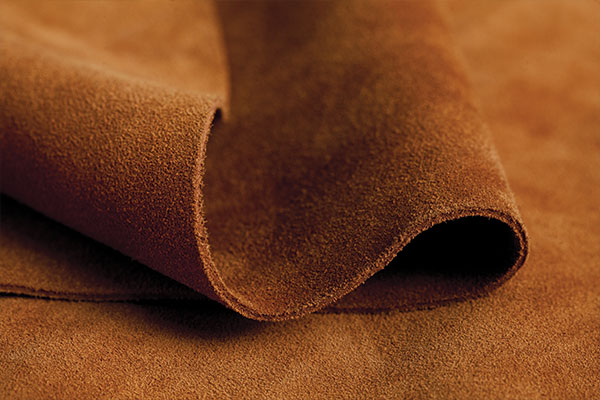Choosing the best suede leather involves checking its nap, color consistency, and origin. Look for a soft, velvety texture and uniform thickness for quality.

Suede leather possesses a unique, luxurious texture that sets it apart from other materials. Its soft, napped finish offers a sophisticated appeal for items ranging from footwear to jackets and accessories. However, not all suede is created equal. Understanding the nuances of this material is crucial to making a purchase that you will cherish for years. Navigating the choices requires knowledge of its origins, quality indicators, and proper applications. This detailed examination provides the necessary information to help you confidently select premium suede for your next acquisition.

Table of Contents
- What Exactly is Suede Leather?
- Understanding the Different Types of Suede
- Sheepskin Suede
- Cowhide Suede
- Pigskin Suede
- How to Identify High-Quality Suede: Key Indicators
- The Feel and Texture (The “Nap”)
- Visual Inspection for Consistency
- The Durability and Thickness Test
- Suede vs. Nubuck vs. Microsuede: What’s the Difference?
- Matching the Suede to Its Purpose
- For Footwear and High-Wear Items
- For Apparel and Luxury Accessories
- For Upholstery
- Essential Questions to Ask Before You Buy
- A Note on Craftsmanship and Quality
What Exactly is Suede Leather?
Suede is a type of leather with a soft, fuzzy, napped finish. It is made from the underside of the animal skin, primarily from lamb, goat, pig, calf, and deer. Unlike full-grain leather, which is created from the top-most layer of the hide, suede is derived from the inner split. This interior part of the hide is less durable but significantly softer and more pliable than the exterior.

The creation process involves splitting the hide and then sanding or buffing the inner layer to raise the fine leather fibers. This action creates the velvety texture known as the “nap.” Because it lacks the tough outer skin layer, suede is more porous and susceptible to stains and water damage, requiring more delicate care. Its distinctive softness, however, makes it a preferred material for high-end fashion and comfort-oriented products.
Understanding the Different Types of Suede
The animal from which the hide is sourced plays a significant role in the final characteristics of the suede. Each type offers a different balance of softness, durability, and weight, making it suitable for specific applications. Knowing the source helps you align the material’s properties with your needs.
Sheepskin Suede
Often considered the most luxurious and delicate type, sheepskin (and lambskin) suede is renowned for its lightweight and exceptionally soft nap. Its velvety texture is second to none, providing a beautiful drape that makes it ideal for high-end apparel like jackets, vests, and dresses. It is also a popular choice for accessories such as gloves, where a soft touch is paramount. The trade-off for its unmatched softness is lower durability, making it less suitable for items that will face rough, daily wear.
Cowhide Suede
Cowhide suede is the most common and durable type. It has a rougher nap and is much thicker and heavier than suede made from sheepskin. This inherent toughness makes it a practical choice for items that need to withstand more abrasion and use, such as shoes, boots, and rugged outerwear. While it is not as soft as its sheepskin counterpart, cowhide suede offers a good balance of comfort and longevity, making it a versatile option for everyday items.
Pigskin Suede
Pigskin suede is characterized by a firm, short nap and notable durability. It is heavier than sheepskin but typically more pliable than cowhide. A distinguishing feature of pigskin is the visible “pores” or hair follicles on the surface, which give it a unique texture. Due to its resilience and firm body, pigskin suede is frequently used for work gloves, shoe linings, and small leather goods that require a sturdy material.
| Suede Type | Key Characteristics | Common Uses |
|---|---|---|
| Sheepskin | Extremely soft, lightweight, delicate nap, drapes well. | Luxury jackets, gloves, high-fashion apparel. |
| Cowhide | Durable, thick, heavier, rougher nap. | Shoes, boots, outerwear, furniture. |
| Pigskin | Tough, firm body, short nap, visible pores. | Workwear, linings, accessories. |
How to Identify High-Quality Suede: Key Indicators
Distinguishing premium suede from its inferior counterparts involves using your senses of touch and sight. Several key characteristics can reveal the quality of the material and help you make a worthwhile investment.
The Feel and Texture (The “Nap”)
The most defining feature of suede is its nap. High-quality suede should feel velvety, soft, and smooth to the touch. When you run your hand across its surface, the fibers should move, creating a visible change in color and texture. This is often referred to as “writing.” A good nap is dense and consistent, without any coarse or bald patches. If the material feels overly stiff, scratchy, or thin, it may be a sign of a lower-grade split or improper processing.
Visual Inspection for Consistency
A careful visual check is essential. Look for a uniform color across the entire surface of the product. Patchiness or discoloration can indicate poor dyeing techniques or imperfections in the hide. The material should also have a consistent thickness. Hold it up to a light source to check for any thin spots that could become weak points over time. Finally, inspect for natural blemishes. While some minor marks are acceptable in natural materials, extensive scratches, scars, or holes are signs of a lower-quality hide.
The Durability and Thickness Test
The appropriate thickness of suede depends on its intended use. For instance, suede for shoes should be thicker and more robust than suede for a lightweight shirt. Regardless of the intended application, good suede should have a substantial feel. It should not feel flimsy or overly stretchy, as this suggests it may not hold its shape well. Gently pinch and pull a small, discreet area to gauge its strength. Quality suede will have some give but should feel resilient and strong.
Suede vs. Nubuck vs. Microsuede: What’s the Difference?
Consumers often confuse suede with similar-looking materials like nubuck and microsuede. While they share a soft, matte finish, their origins and properties are distinctly different.
Suede, as established, is made from the inner split of the hide, making it very soft but also more porous and delicate. Its nap is composed of longer, looser fibers, which contribute to its fuzzy feel.
Nubuck is also a natural leather, but it is created from the outer side of the hide—the same part used for full-grain leather. The surface is sanded or buffed to create a short, fine nap. This makes nubuck more durable and resistant to wear than suede, though it is still susceptible to stains. It has a finer, more uniform appearance and feels like velvet but with greater resilience.
Microsuede, on the other hand, is not leather at all. It is a synthetic fabric, typically made from 100% polyester. It is designed to mimic the look and feel of real suede but offers superior stain resistance and is easier to clean. While highly practical, it lacks the natural character, breathability, and unique aging properties of genuine leather.
Matching the Suede to Its Purpose
The best suede for you is one that aligns with your lifestyle and the item’s intended function. A material that is perfect for one application may be completely unsuitable for another.
For Footwear and High-Wear Items
When choosing suede for shoes, boots, or a frequently used bag, durability is paramount. Cowhide or pigskin suede are the superior choices here. Their inherent thickness and strength can withstand the scuffs and strains of daily use. It is also wise to select items that have been pre-treated with a water and stain repellent, or to apply one yourself before the first wear. This simple step can significantly extend the life of your suede goods.
For Apparel and Luxury Accessories
For items where comfort, drape, and a luxurious feel are the primary concerns, sheepskin suede is the ideal option. Its lightweight and buttery-soft texture make it perfect for creating elegant jackets, skirts, and premium gloves. These items require more mindful care and are best reserved for occasions where they are less likely to encounter harsh weather or rough surfaces.
For Upholstery
Suede upholstery can add a warm, inviting, and sophisticated touch to any interior space. However, its porous nature makes it vulnerable to spills and stains, which can be a concern in households with children or pets. For furniture, a more durable option like cowhide suede is preferable. Alternatively, high-quality microsuede offers a similar aesthetic with far greater ease of maintenance, making it a practical choice for high-traffic living areas.
Essential Questions to Ask Before You Buy
To ensure you are making an informed purchase, approach your selection with a prepared set of questions. Asking the right things can provide clarity and confidence in your decision.
- What animal did the suede come from? This question helps you determine the expected softness, durability, and care requirements right away.
- Has the material been treated for water or stain resistance? Knowing if the item comes with a protective finish can save you a step and offer peace of mind.
- What are the recommended care instructions? The seller should be able to provide specific cleaning and maintenance advice tailored to that particular type of suede.
- Can I see the entire piece? When buying raw material or a large item, inspect the full surface to ensure consistency and check for hidden flaws.
A Note on Craftsmanship and Quality
Even the finest material can be wasted if the craftsmanship is poor. When evaluating a suede product, look beyond the leather itself. At Beldtura, our focus on full-grain leather is rooted in a passion for durable materials and meticulous craftsmanship. This principle applies to any fine material, including suede. Always examine the stitching; it should be tight, even, and consistent. Check the quality of the hardware—zippers, buckles, and clasps should feel solid and operate smoothly. The lining and internal construction are just as important as the exterior. These details are the true indicators of a product built to last, reflecting a commitment to quality that transcends any single material.



